#Ancient Mesopotamia
Explore tagged Tumblr posts
Text
This is ancient mesopotamia in case anyone doesn't know by the dynasty name alone. I had to look it up.
Though I suppose you could guess by the time period and the cuneiform inscription.


Ceremonial axe, Elamite, Igi-Halkid Dynasty, 1345-1305 BC
from The Louvre
465 notes
·
View notes
Text

Relief panel with Ashurnasirpal II and attendant, palace Nimrud (Kalhu), Neo-Assyrian, ca. 883–859 BCE. MET (ID: 32.143.4) This relief, from the palace of the Assyrian king Ashurnasirpal II (r. ca. 883-859 BCE), depicts a king, probably Ashurnasirpal himself, and an attendant. The two larger-than-life-sized figures are carved in low relief, and as with other reliefs in the palace featuring the image of the king, the carving is particularly fine and shows special attention to detail. (MET)
#assyria#assyrian art#assyrian history#ancient assyria#mesopotamia#mesopotamian art#ancient mesopotamia#nimrud#antiquité
274 notes
·
View notes
Text

Assyrian openwork plaque, 9th century BC-8th century BC, Nimrud.
162 notes
·
View notes
Text

#ea nāṣir#ea naṣir#ea nasir#copper#timothee chalamet#emma stone#russel crowe#mesopotamia#ancient mesopotamia
69 notes
·
View notes
Text
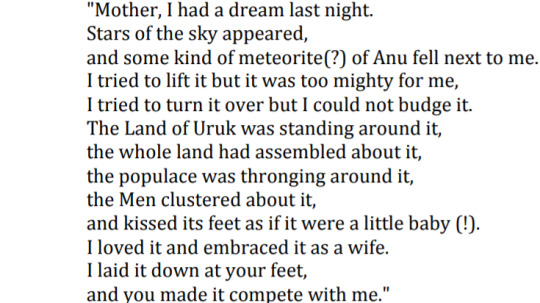

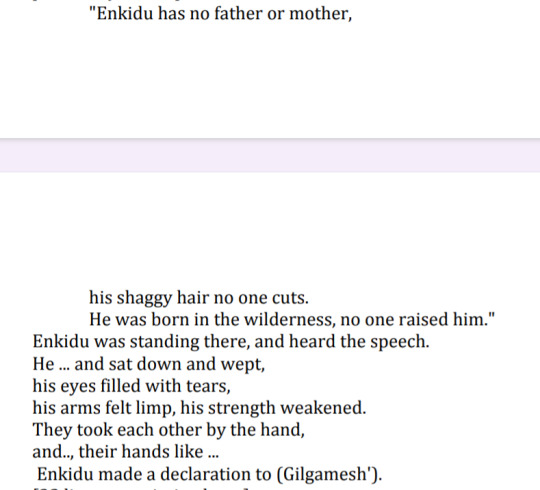
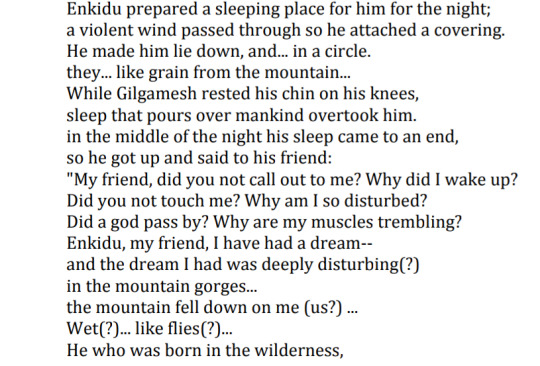



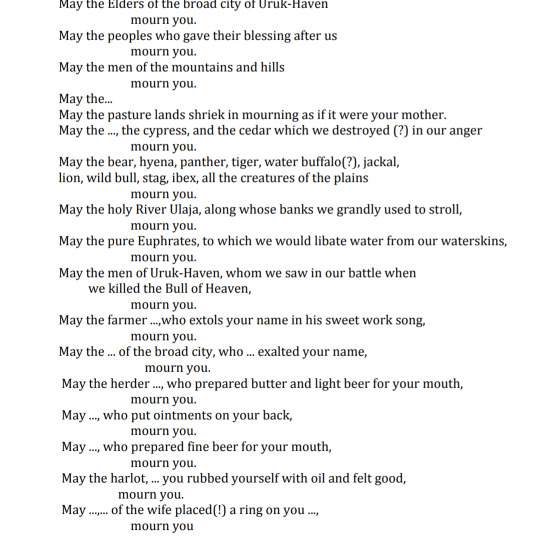
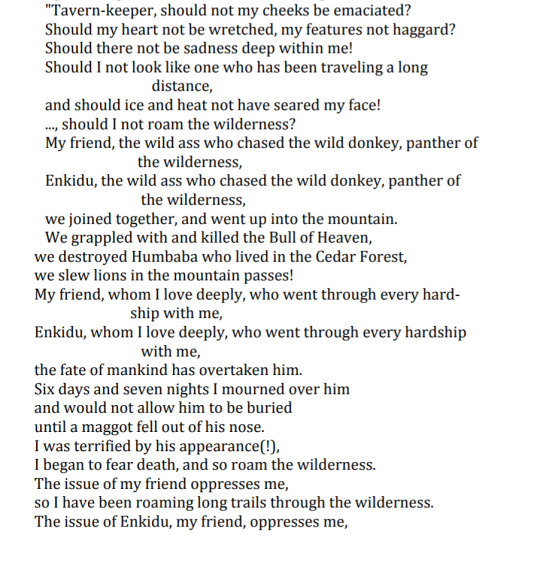

Miscellaneous gilgamesh excerpts that go really really hard. .. . I am kind of obsessed (can you guys believe how perfrctly grief was articulated even 5000 years ago ppl had the exact same emotions and also they were gay I'm SICK!!!) (I filled happy people with woe over you is actually so nauseating) (I love ancient poetry) (also it makes me sad cause so much is missing)
#epic of gilgamesh#epic poetry#classic literature#classic lit#gilgamesh#gilgamesh and enkidu#ancient literature#ancient mesopotamia#gay people
227 notes
·
View notes
Text
Dovetail joints in Achaemenid Palaces

Dovetail joints have been used in woodworking for thousands of years. About 2,500 years ago in ancient Iran (Persia) they were also used in the construction of Achaemenid palaces (such as Persepolis, Susa or Bardak Siah Palace in Bushehr province in the south of Iran). (550 to 330 BC). They were used to connect different stone parts of the structures.
Photo Source

Joining two pieces of stone with a dovetail joint at Persepolis.
This method has also been used in Urartu, Median, Egyptian, and Greek civilizations.
33 notes
·
View notes
Text
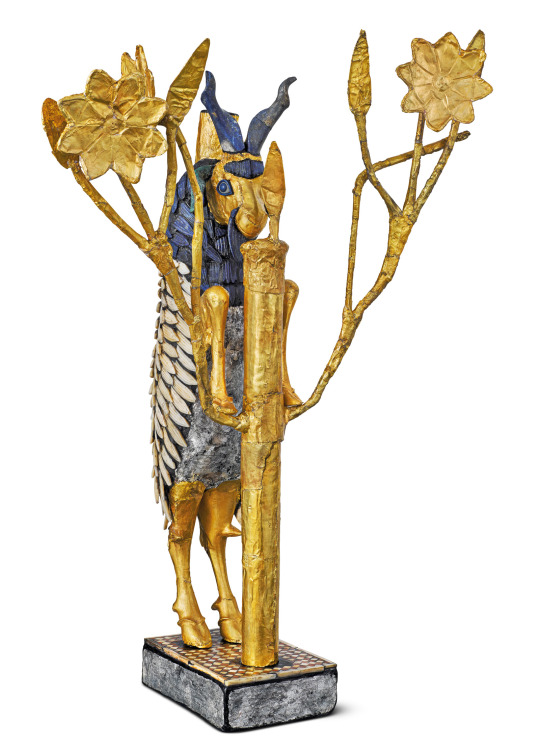
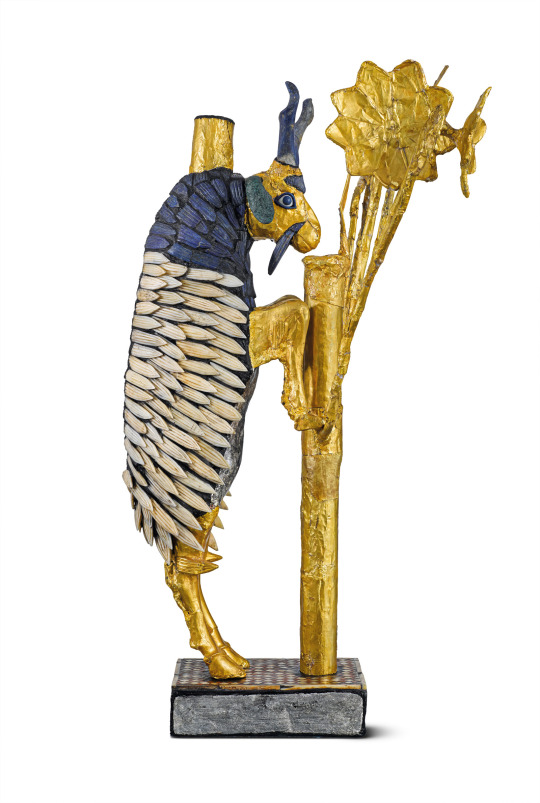
Gold, silver, shell, and lapis lazuli figurine of a ram in a thicket, city of Ur, circa 2450 BC
from The Penn Museum
2K notes
·
View notes
Text
Anzu - bird of thunder in Mesopotamian mythology

#mesopotamian mythology#Mesopotamian#mesopotamia#sumerian#ancient mesopotamia#ancient sumeria#sumeria#mythology#monster#thunder#crayon drawing#crayon#traditional art#aesthetic#artist on tumblr#bright colours#traditional drawing#traditional illustration#myth
24 notes
·
View notes
Text

The Hymn to Inanna
By Enheduanna
Translated by Jane Hirshfield
⋆。°✩ ⋆。°✩ ⋆。°✩ ⋆。°✩ ⋆。°✩ ⋆。°✩ ⋆。°✩ ⋆。°✩ ⋆。°✩
Lady of all powers,
In whom light appears,
Radiant one
Beloved of Heaven and Earth,
Tiara-crowned
Priestess of the Highest God,
My Lady, you are the guardian
Of all greatness.
Your hand holds the seven powers:
You lift the powers of being,
You have hung them over your finger,
You have gathered the many powers,
You have clasped them now
Like necklaces onto your breast.
—
Like a dragon,
You poisoned the land—
When you roared at the earth
In your thunder,
Nothing green could live.
A flood fell from the mountain:
You, Inanna,
Foremost in Heaven and Earth.
Lady riding a beast,
You rained fire on the heads of men.
Taking your power from the Highest,
Following the commands of the Highest,
Lady of all the great rites,
Who can understand all this is yours?
—
In the forefront
Of the battle,
All is struck down by you—
O winged Lady,
Like a bird
You scavenge the land.
Like a charging storm
You charge,
Like a roaring storm
You roar,
You thunder in thunder,
Snort in rampaging winds.
Your feet are continually restless.
Carrying your harp of sighs,
You breathe out the music of mourning.
—
It was in your service
That I first entered
The holy temple,
I, Enheduanna,
The highest priestess.
I carried the ritual basket,
I chanted your praise.
Now I have been cast out
To the place of lepers.
Day comes,
And the brightness
Is hidden around me.
Shadows cover the light,
Drape it in sandstorms.
My beautiful mouth knows only confusion.
Even my sex is dust.
—
What once was chanted of Nanna,
Let it now be yours—
That you are as lofty as Heaven,
Let it be known!
That you are as wide as the Earth,
Let it be known!
That you devastate the rebellious,
Let it be known!
That you roar at the land,
Let it be known!
That you rain your blows on their heads,
Let it be known!
That you feast on corpses like a dog,
Let it be known!
That your glance is lifting toward them,
Let it be known!
That your glance is like striking lightning,
Let it be known!
That you are victorious,
Let it be known!
That this is not said of Nanna
It is said of you—
This is your greatness.
You alone are the High One.
—
O my Lady,
Beloved of Heaven,
I have told your fury truly.
Now that her priestess
Has returned to her place,
Inanna's heart is restored.
The day is auspicious,
The priestess is clothed
In beautiful robes,
In womanly beauty,
As if in the light of the rising moon.
The gods have appeared
In their rightful places,
The doorsill of Heaven cries "Hail!"
Praise to the destroyer endowed with power,
To my Lady enfolded in beauty.
Praise to Inanna.
#divine feminine#goddess#inanna#the sacred feminine#Ishtar#ancient mesopotamia#love#spirituality#war#sexuality#dark femininity#dark feminine energy
52 notes
·
View notes
Text

Kudurru of Gula-ereš, Kassite Period, Babylonia. British Museum (ID: 102485).
A kudurru is an important Babylonian object that began to appear during the Kassite Period (c. 1500–1155 BCE). These objects were often made from black limestone and were typically placed near temples to ensure that the legal acts inscribed on them were protected by the gods.
#babylonia#babylonian history#babylonian art#mesopotamia#ancient mesopotamia#mesopotamian art#babylon#archeology#ancient near east#iraq#ancient iraq#ancient archeology
97 notes
·
View notes
Text

Statue of a mastiff, 2nd millennium BC, Mesopotamia.
131 notes
·
View notes
Text
ENDO ENJOYERS PLEASE HELP A LAD OUT!!!
Any Endo enjoyers out there good at pattern recognition or study symbols, I NEED YOUR HELP!!
If you're free enough to scourge through his 3729479229 tattoos, you'll notice he has a lot of flames, triangles, and vaguely alchemical/Christian/norse symbols tattooed on him
SAVE ME FROM CRYING FOR THE nth TIME coz If you can check if any of his nonsense-looking tattoos connect to existing norse runes and/or alchemical symbols I'll be forever grateful!!!
Also: if anyone is hyperfixated or deeply familiar with CHRISTIANITY (history/lore/Bible/symbols), JUDAISM (symbols/tree of Kaballah), ANCIENT MESOPOTAMIA (gods/symbols) AND ALCHEMY I require your knowledge. Is there any correlation between the first step of creating the Philosopher's Stone "nigredo" and Endo—because I've been looking into this via. black sun imagery and alchemy and serpents relating to the base of nigredo itself

And if you have a lot of knowledge on christianity/judaism and/or symbolic nuances behind SNAKES AND EAGLES and/or the details of Enki and Enlil OR if you're also into over-analyzing this man's tattoos pleaseeee PM me I'm going insane writing part 2 of my SuoEndopost 😭😭
There's so many thoughts in my head and i cant structure it into words wuwuwuwuwu
#if youre wondering why the suo/endopost isnt out yet its literally because i've been doing so much yap research#I've entered the 8th strata of hell#wbk#wind breaker#endo yamato#suo hayato#more suo chinkposting#but not rlly#psychicwaveblab#ancient mesopotamia#christianity#judaism#alchemy#im
27 notes
·
View notes
Text

Almost five thousand years ago in ancient Mesopotamia, Aziraphale and Crowley (or rather, Crawley) manage to get themselves mixed up in a series of events that would later be called The Epic of Gilgamesh. To complete his Heaven-sent mission, and civilize a wild man named Enkidu, Aziraphale must escort Crawley on a long journey into the wilderness. And maybe also introduce Crawley to dining out and human food. At the same time, to complete his Hell-sent mission and civilize the same wild man, Crawley has to be escorted by Aziraphale on a long journey into the wilderness. And also maybe to have some strong new feelings that the demon had never felt before...
Of course, mistakes were made...
Words: 15,559
Status: Complete
Rating: Mature
Art Credit: Gilgamesh and Enkidu Fight by Neil Dalrymple
@evilasiangenius
#fanfic#fanfic cover#fanfiction#fanfiction reccomendations#good omens#good omens fanfiction#good omens fanfiction recs#good omens fandom#ineffable husbands#mature audiences only#aziraphale and crowley through the ages#aziracrow#azicrow#aziraphale#aziraphale x crowley#crowley#the epic of gilgamesh#ancient mesopotamia
23 notes
·
View notes
Text

#no i didn't steal this off facebook#what makes you think that#i would neverrrrrr#mesopotamia#ancient mesopotamia#bronze#ea naṣir#ea nasir#ea nāṣir#history
26 notes
·
View notes
Text

The anonymous Palmyrene noblewoman depicted in the funerary bust known as "Beauty of Palmyra" in manga style
Art by Sato Futaba author of the historical mangas "Utae, Erinna!" and "Anna Komnene"
#ancient rome#roman empire#ancient mesopotamia#palmyra#ancient world#Beauty of Palmyra#historical person#historical art#manga#Sato Futaba
12 notes
·
View notes